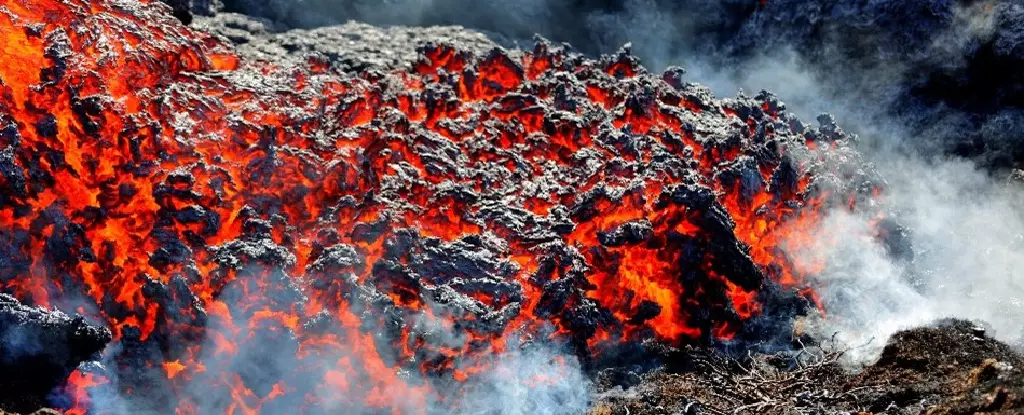The dormant volcanoes on Iceland’s Reykjanes Peninsula have suddenly sprung back to life after nearly 800 years, catching researchers and residents off guard with their renewed ferocity. Since 2021, a total of eight eruptions have taken place in the area, signaling a significant upsurge in volcanic activity. Recent studies have indicated that a shallow pool of magma, measuring only 10 kilometers wide and located 9-12 kilometers below the surface, is the main source fueling these eruptions. Geologist Valentin Troll and his team from Uppsala University in Sweden have been at the forefront of this research, pointing out that the recent eruptions could be just the beginning of a prolonged period of volcanic activity in Iceland.
Mapping the Subsurface of the Reykjanes Peninsula
Troll and his colleagues utilized seismic wave data from volcanic eruptions and earthquake ‘swarms’ to gain a better understanding of the underground structure of the Reykjanes Peninsula. Their findings revealed that the eruptions at the Fagradalsfjall volcanic system in 2021 were connected to a pocket of magma that traveled along geological lines to Sundhnukur, where eruptions have been consistently occurring since late 2023. The geochemical ‘fingerprints’ of the lavas from both eruption zones suggested a joined magma plumbing system linking the two volcanic systems. This shared magma pool is believed to have formed between 2002 and 2020, recharged in 2023, and continues to supply magma to the surface through sloped pathways. The continuous replenishment of magma from deeper in the mantle could fuel eruptions for decades to come, posing a long-term threat to the region’s safety.
Preparing for the Future
With the identification of the magma pool, authorities can now focus on mapping and monitoring the subsurface activity to prepare for potential future eruptions. While repeated evacuations may disrupt communities, they are essential for ensuring the safety of residents in the region. The frequent eruptions could also pose a threat to critical infrastructure such as geothermal power plants, which provide electricity and heat to Iceland, and experimental carbon sequestration facilities. As Iceland sits atop the Mid-Atlantic Ridge, a major tectonic plate boundary, volcanic eruptions are not uncommon in the region. However, the recent surge in activity has raised concerns about the stability of the area, prompting researchers like Ilya Bindeman from the University of Oregon to call for continued monitoring of the situation. The unpredictable nature of nature makes it difficult to predict the duration and frequency of future eruptions, emphasizing the need for constant vigilance and preparedness.
The ongoing volcanic activity in Iceland’s Reykjanes Peninsula serves as a stark reminder of the dynamic nature of our planet’s geology. As researchers delve deeper into understanding the intricate processes beneath the surface, it is crucial for authorities and communities to come together in preparation for potential future events. By staying informed, vigilant, and proactive, we can mitigate the risks posed by volcanic activity and ensure the safety and well-being of all those living in volcanic-prone regions.


Leave a Reply